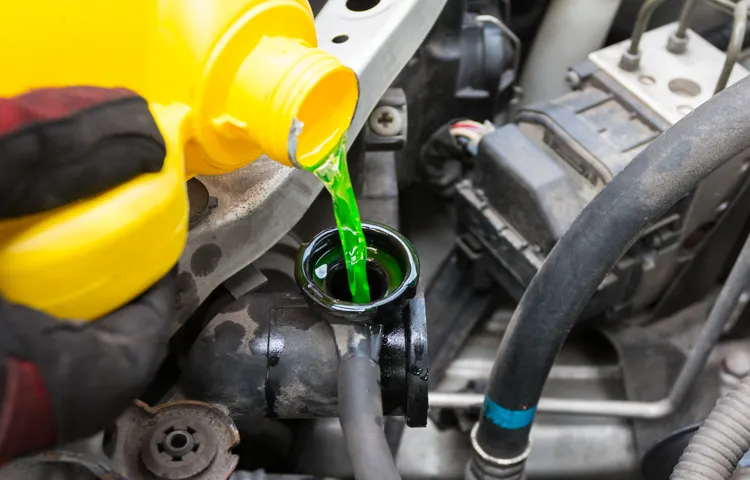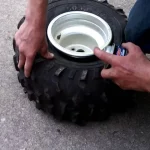As a car owner, it is important to keep up with the maintenance of your vehicle to ensure it runs smoothly for years to come. One vital aspect of car maintenance is checking and refilling your coolant. But, how often should you be doing that? Refilling coolant frequency can depend on a variety of factors, such as the type of car you have and your driving habits.
In this guide, we’ll go over everything you need to know about coolant and how often you should be refilling it to keep your car in top shape. Think of it as a roadmap to a healthier engine, where we’ll guide you through the twists and turns of proper coolant maintenance so that you can avoid the pitfalls of neglect. Whether you’re a first-time car owner or someone who’s been living on the road for years, this guide is for you.
So, buckle up and let’s dive in!
Table of Contents
Understanding Coolant and Its Importance
If you’re wondering how often should you refill your coolant, the answer is not one size fits all. Typically, coolant should be replaced every 2-3 years, or every 30,000 – 50,000 miles, however this can vary depending on several factors. The regularity of driving, climate, and the type of coolant used can all affect how frequently you should top up your coolant levels.
Coolant is essential to ensure that your engine doesn’t overheat, and can also help prevent damage from rust and corrosion. It’s always a good idea to regularly check your coolant levels and top up as needed to ensure your engine runs smoothly and efficiently. Neglecting your coolant levels can cause serious damage over time, so make sure to prioritize checking this important fluid regularly.
What is Coolant?
Coolant is an essential fluid that helps regulate the temperature of your vehicle’s engine. It keeps the engine from overheating, which can cause severe damage and lead to costly repairs. Coolant, also known as antifreeze, is a mixture of water and chemicals that cool and lubricate the engine.
It works by absorbing heat from the engine and transferring it to the radiator, where it is cooled. The coolant then circulates back to the engine to repeat the process. The importance of using the right type of coolant cannot be overemphasized.
Using the wrong type of coolant can cause corrosion, leaks, or engine damage. Different types of engines require different types of coolant, and it’s crucial to follow the manufacturer’s recommendations when selecting the appropriate coolant for your vehicle. By understanding coolant and its importance, you can help ensure that your engine stays cool and operates smoothly.
Why is it Important?
Coolant Coolant is a vital component of any vehicle’s engine, as it plays a crucial role in keeping the engine running smoothly. The coolant is a liquid that flows around the engine and keeps it at an optimum temperature by absorbing heat from the engine’s components, including the cylinder walls, pistons, and axle bearings. Without coolant, the engine would quickly overheat, potentially causing severe damage or even complete failure.
This is why regularly checking the coolant levels and ensuring that the correct mixture is used is essential for the overall health and longevity of the engine. Additionally, mixing different types of coolant can damage the engine, so it’s important to understand which coolant is suitable for your particular vehicle. In short, taking care of your engine’s coolant is crucial in maintaining the proper function and health of your vehicle’s engine to ensure it operates optimally and efficiently.
Factors that Affect Coolant Refilling Frequency
If you’re wondering how often you should refill your coolant, there are several factors that come into play. Firstly, the type of coolant you use can impact how often it needs to be refilled. Some coolants are designed to last longer than others, so it’s important to choose the right one for your vehicle.
Additionally, the age and condition of your vehicle can impact the frequency of coolant refills. Older vehicles may require more frequent refilling due to wear and tear on the system, while newer vehicles may be able to go longer between refills. Finally, your driving habits and the climate you live in can also play a role in how often you need to refill your coolant.
If you frequently drive in hot or cold weather, or if you frequently tow heavy loads, you may need to refill your coolant more often than someone who uses their vehicle for light commuting. Overall, it’s important to regularly check your coolant levels and refill as needed to ensure the health and longevity of your vehicle’s engine.
Type of Coolant Used
The type of coolant used in your vehicle can play a significant role in how often you need to refill it. Different types of coolant have varying lifespans and levels of effectiveness, which can impact how frequently they need to be topped up. Additionally, factors such as your driving habits, the age of your vehicle, and the climate in which you drive can all influence how often you need to add more coolant.
For instance, if you frequently drive in extreme heat or cold, your engine may require more coolant to stay at a safe operating temperature. Similarly, if you frequently put a lot of strain on your engine, such as by towing heavy loads or driving in hilly or mountainous terrain, you may need to top up your coolant more frequently. Overall, staying aware of the type of coolant used in your vehicle and understanding the factors that can impact your coolant refilling frequency can help ensure that your engine stays running smoothly and safely.
Age of the Car
One of the factors that affect coolant refilling frequency is the age of the car. As cars get older, they tend to develop leaks, which can cause the coolant level to drop. When this happens, the engine can overheat and cause damage.
If you notice that your car’s coolant level is constantly low, it may be a sign that there is a leak somewhere in the system. In addition, if your car is more than a few years old, it may be time to have the coolant system serviced. This can help you catch any leaks early on and prevent them from causing serious damage to your engine.
So, remember to keep an eye on your coolant levels and have your car inspected regularly to ensure its longevity and performance.
Driving Conditions and Frequency of Use
One of the main factors that affects the frequency of coolant refilling in your car is the driving conditions and frequency of use. If you live in an area with extreme temperatures, your engine may be working harder to maintain its optimal temperature, which can cause your coolant to evaporate more quickly. Additionally, if you frequently drive your car on long trips or in stop-and-go traffic, your engine may be working harder than usual, which can also cause your coolant to evaporate faster.
The frequency of use is another important factor to consider when it comes to coolant refilling. If you only use your car occasionally, you may not need to refill your coolant as often as someone who drives their car daily. Ultimately, it is important to keep an eye on your coolant levels and check them regularly to ensure that your engine is running smoothly.
How Often Should You Refill Coolant?
As a car owner, it’s important to keep an eye on your engine’s coolant levels. This fluid helps regulate the temperature of your engine and prevent it from overheating. So, how often should you refill your coolant? The answer actually depends on a few factors.
If you have an older car or drive in hot climates, you may need to top off your coolant more frequently – perhaps every 30,000 miles or so. However, newer cars and those in cooler environments may be able to go for longer without needing a refill. As a general rule, though, it’s a good idea to check your coolant level at least once a year, and top it off as needed.
Just be sure to use the correct type of coolant for your engine, and follow the manufacturer’s recommendations for how much to add. By doing so, you’ll help ensure that your engine stays cool and runs smoothly for years to come.
Manufacturer’s Guidelines
When it comes to refilling coolant in your car, it’s wise to follow the manufacturer’s guidelines. These guidelines usually recommend a specific time interval, such as every two years or every 30,000 miles. However, it’s important to note that every car is different and may have different requirements.
Checking your car’s manual or consulting with a trusted mechanic can give you a better understanding of when you should refill your coolant. It’s also important to note that neglecting to refill your coolant can lead to serious engine damage and even overheating, so it’s not something that should be ignored. So, if you’re unsure about how often you should refill your coolant, don’t hesitate to do some research and consult with experts to ensure your car stays running smoothly.
Visual Inspection of Coolant Level
Coolant Level One of the most critical maintenance tasks for your vehicle is checking the coolant level. Coolant, often referred to as antifreeze, is a crucial component in keeping your engine running at the optimal temperature. A visual inspection of the coolant level should be done regularly to prevent overheating, engine damage, and failure.
How often you need to refill the coolant depends on several factors, such as the make and model of your car, driving habits and conditions, and the climate you live in. Most manufacturers recommend checking the coolant level once a month, especially during the hot and cold seasons. However, if you notice any signs of leaks or smell a sweet odor coming from the engine area, you should check the coolant level immediately.
Ignoring low coolant levels can lead to costly repairs and even engine replacement. In short, it’s always better to be proactive and keep an eye on your coolant levels to keep your car running smoothly.
Signs of Low Coolant Levels and Why They Should Not be Ignored
Wondering how often to top off your coolant levels? It’s important to keep an eye on your car’s coolant levels since low levels can cause serious damage to your engine. One sign that your coolant levels are low is if your engine is overheating. You may also notice that your heater isn’t working as well as it should be.
Coolant not only helps regulate your engine’s temperature, but it also keeps your heater working properly. If you continue to drive with low coolant levels, you risk damaging your engine beyond repair. So, to prevent any issues, it’s recommended to check your coolant levels at least once a month and top off as needed.
Regular maintenance can help extend the life of your vehicle and save you from costly repairs down the road.
Conclusion
Well, dear car owner, the answer to how often you should refill your coolant is as elusive as a skilled mechanic on a Monday morning. It depends on various factors such as the make and model of your car, the coolant formulation, and your driving habits. So, if you want to ensure that your car’s engine stays as chill as a cucumber, it’s best to consult your owner’s manual, keep an eye on your coolant levels regularly, and refrain from driving like a speed demon.
And remember, just like a good cup of tea, your car’s coolant needs a refill only when it’s running low. So, stay cool and drive safe!”
FAQs
What is the purpose of coolant in a car?
Coolant helps regulate the temperature of the engine and prevents it from overheating.
How often should I check my coolant levels?
It’s recommended to check your coolant levels at least once a month.
How do I know when it’s time to refill my coolant?
Check the coolant levels regularly. If the levels are low, it’s time to refill. If you notice the engine overheating or the coolant warning light illuminating, it’s definitely time to refill.
Can I refill my coolant myself?
Yes, you can refill your coolant yourself. Just make sure to use the correct type of coolant for your car and follow the instructions carefully.
How much coolant should I add when refilling?
Check your car’s manual for recommended amounts. A general rule of thumb is to add a 50/50 mix of coolant and water until the coolant level reaches the “full” line on the reservoir tank.
Can old coolant be reused?
While old coolant can be reused, it’s best to replace it with new coolant to ensure the highest level of engine performance.
Is it necessary to flush the cooling system before refilling with new coolant?
It’s recommended to flush the cooling system before refilling with new coolant. This helps remove any debris or old coolant that may be hindering the performance of the system.



